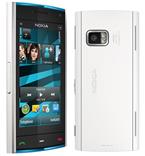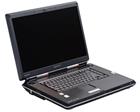
Главная страница Случайная страница
КАТЕГОРИИ:
АвтомобилиАстрономияБиологияГеографияДом и садДругие языкиДругоеИнформатикаИсторияКультураЛитератураЛогикаМатематикаМедицинаМеталлургияМеханикаОбразованиеОхрана трудаПедагогикаПолитикаПравоПсихологияРелигияРиторикаСоциологияСпортСтроительствоТехнологияТуризмФизикаФилософияФинансыХимияЧерчениеЭкологияЭкономикаЭлектроника
Types of personal computers
|
|
A personal computer (PC) is any general-purpose computer whose size, capabilities, and original sales price make it useful for individuals and which is operated by an end user.
A personal computer may be a desktop computer, a laptop, tablet PC or a handheld PC (also called palmtop). The most common microprocessors in personal computers are x86-compatible CPUs. Software applications for personal computers include word processing, spreadsheets, databases, Web browsers and e-mail clients, games, and special-purpose software. Modern personal computers often have high-speed connection to the Internet.
A PC may be used at home, or may be found in an office. Personal computers can be connected to a local area network (LAN) either by a cable or wirelessly.
Workstation. A workstation is a high-end personal computer designed for technical or scientific applications. Desktop computers come in a variety of styles ranging from large vertical tower cases to small form factor models that can be tucked behind an LCD monitor. Most modern desktop computers have separate screens and keyboards.
Single unit is a subtype of desktop computers, which combine the monitor and case of the computer within a single unit. The monitor almost always utilizes a touchscreen as an optional method of user input; however detached keyboards and mice are normally still included. The inner components of the PC are often located directly behind the monitor.
Nettop is a subtype of desktop, introduced by Intel in February 2008 to describe low-cost, lean-function, desktop computers. This type features the new Intel Atom processor which enables it to consume less power and to be built into small enclosures.

 Laptop ( notebook) is a small personal computer designed for portability. Laptops contain high capacity batteries that can power the device for extensive periods of time. One main drawback of the laptop is that little can be done to upgrade the overall computer from its original design. Some devices can be attached externally through ports (including via USB).
Laptop ( notebook) is a small personal computer designed for portability. Laptops contain high capacity batteries that can power the device for extensive periods of time. One main drawback of the laptop is that little can be done to upgrade the overall computer from its original design. Some devices can be attached externally through ports (including via USB).
Netbooks are a rapidly evolving category of small, light and inexpensive laptop computers suited for general computing and accessing web-based applications and optimized for low weight and low cost. In the short period since their appearance in late 2007, netbooks have grown in size and features, now converging with new smaller, lighter notebooks.
A tablet PC is a notebook or slate-shaped mobile computer, first introduced in the early 90s popularized by Microsoft. Its touchscreen allows the user to operate the computer with a stylus or digital pen, or a fingertip, instead of a keyboard or mouse. The form factor offers a more mobile way to interact with a computer. Tablet PCs are often used where normal notebooks are impractical or unwieldy.
The ultra-mobile PC (UMPC) is a specification for a small form factor of tablet PCs. It was developed as a joint development exercise by Microsoft, Intel, and Samsung, among others. Current UMPCs typically feature the Windows XP, Windows Vista, Windows 7, or Linux operating system and low-voltage Intel Atom processors.
A home theater PC (HTPC) is a convergence device that combines the functions of a personal computer and a digital video recorder. It is connected to a television or a television-sized computer display and is often used as a digital photo, music, video player, TV receiver and digital video recorder. Home theater PCs are also referred to as media center systems or media servers. The general goal in a HTPC is usually to combine many or all components of a home theater setup into one box.
A pocket PC is a hardware specification for a handheld-sized computer (personal digital assistant) that runs the Microsoft Windows Mobile operating system. It may to run an alternative OS like NetBSD or Linux. It has many of the capabilities of modern desktop PCs. Some of these devices also include mobile phone features. Pocket PCs can also be used with many other add-ons like GPS receivers, barcode readers and cameras. In 2007, with the release of Windows Mobile 6, Microsoft dropped the name Pocket PC in favor of a new naming scheme. Devices without an integrated phone are called Windows Mobile Classic instead of Pocket PC. Devices with an integrated phone and a touch screen are called Windows Mobile.
I Translate the words and word combinations:
1) capability [  ] 2) lap [
] 2) lap [  ] 3) hand [
] 3) hand [  4) palm [
4) palm [  ] 5) single unit 6) to detach [
] 5) single unit 6) to detach [  ]; detached 7) lean [
]; detached 7) lean [  ] 8) to consume [
] 8) to consume [  ] 9) capacity [
] 9) capacity [  ] 10) to evolve [
] 10) to evolve [  ] 11) to suit [
] 11) to suit [  ] 12) to converge [
] 12) to converge [  ]; convergence 13) goal
]; convergence 13) goal
II Find the equivalents in the text:
конечный пользователь; табличные процессоры; высокоскоростное подключение; отдельно подключаемые клавиатура и мышь; с ограниченной функциональностью; аккумуляторы большой емкости; касание пальцем; устройство для считывания штрих-кода ● кінцевий користувач; табличні процесори; швидкісне підключення; клавіатура та миша, які підключаються окремо; з обмеженою функціональністю; акумулятори великої місткості; торкання пальцем; пристрій для зчитування штрих-коду.
III Transform into indirect speech and translate the sentences:
1) The chief executive officer of the company said: ” We shall drop the name Pocket PC in favor of a new naming scheme”. 2) The engineer says: ” This device was first introduced in early 1990s”. The system administrator said: ” We have no high speed connection to the Internet”. 4) He said: ” I upgraded my home desktop PC last year but I plan to buy a laptop”. 5) She said: ” Was the device attached externally via USB port? ”
IV Answer the questions:
1) What is a personal computer? 2) What software applications for PC do you know? 3) What types (groups) can PCs be divided into? 4) What are the main features of desktop computers? 5) What are the main features of notebooks? 6) What type of PC do you have? What is its configuration?
V Give the full name of the shortenings and explain the meaning:
UPS; CMOS